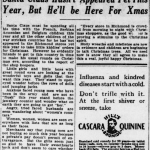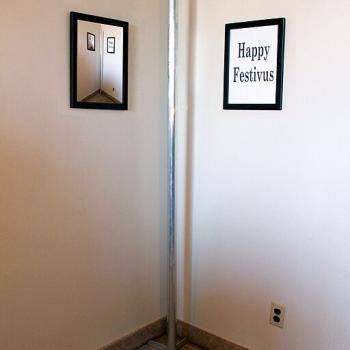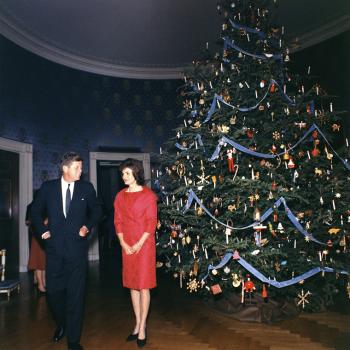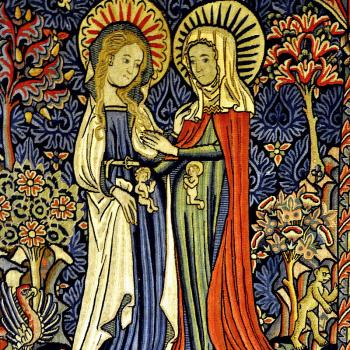https://www.youtube.com/watch?v=AmW5GO6btMM
When Irving Berlin wrote that he was “dreaming of a white Christmas,” he was writing about snow, not about racial representation. But the reality is that so many Christmas films—especially the romantic comedies that I confess that I adore—continue to be about white people. The Christmas Prince trilogy offers a useful example: a sweet (white) girl, a handsome (white) man, a romance that blossoms amid freshly fallen (white) snow, and, if there is baking to be done, an adorable mess of (white) flour. There are exceptions, to be sure, but time and again, holiday films have focused on white, middle-class, Christian people and deployed a formula that has drawn criticism for its lack of diversity.
But this year offers a new possibility: Asian American holiday romantic comedies! Last night, Lifetime aired A Sugar & Spice Holiday, about a Chinese American architect who returns home for the holidays, reconnects with a boy from high school, and (of course) participates in a baking competition. And last month, Hallmark released The Christmas Bow, about an Asian American violinist who, while recovering from a hand injury, finds love and hope during the holidays. (A hometown love interest is involved with that story, too, although I’m not sure if there is any baking.)
My favorite option, though, is Netflix’s Dash & Lily. Aside from the issue of racial representation, Dash & Lily has a few characteristics that set it apart in the genre of holiday romantic comedies – it isn’t a film, but a streaming television series, and it’s based on a series of popular young adult novels written by David Levithan and Rachel Cohn.
What I find most interesting, though, is how Dash & Lily portrays the distinctive ways that Asian Americans, and Japanese Americans in particular, celebrate the holidays. In this regard, the series invites some useful questions for consideration. How does centering an Asian American character change the stories we might tell about Christmas and New Year? And how does focusing on different people challenge us to shift our assumptions about the rituals and meanings of the winter holidays?
By centering an Asian American character, Dash & Lily does more than add new faces to the traditionally white genre of holiday films. It also challenges viewers to consider real-life diversity and the rich array of holiday rituals practiced by an increasingly multiracial and multireligious America. Ultimately, Dash & Lily offers an opportunity to reflect on how Asian Americans do Christmas and New Year on their own terms.
An Asian American Holiday Rom-Com
Dash & Lily tells the story of the budding romance between Dash and Lily, two teenagers living in New York City. Lily is biracial and Japanese American, and elements of Asian American life are present throughout the film. We see Lily interact frequently with her large, biracial extended family, especially her stern grandfather and her eccentric aunt. (These relationships reflect reality – according to the Pew Research Center, Asian Americans are the racial group with the highest percentage of multigenerational households in the U.S.)
Lily doesn’t just happen to be Asian American; in fact, her racial identity is important to the story. Midway in the series, Lily reveals that being Asian American is one reason she feels marginalized from her classmates. In a dramatic scene at a downtown poetry slam, Lily stands before a stunned audience and gives an impromptu speech in which she unleashes her anger at Edgar, a boy whose middle school teasing had caused her years of social insecurity and isolation. “I wish I could have stood up to all the bullies who made me feel too weird, too different, too Asian,” she declares.
The pain she articulates—about being an outcast for being too Asian—owes in part to the initiative of Midori Francis, the actor cast as Lily. Although the novel on which the show is based does not specify that Lily is Asian American, Francis seized the opportunity to make Lily an Asian American character who reflected her own experiences. As she explained in an interview with Refinery 29,
For me, a big part of being bullied growing up — because I was. Or teased — was the way I looked. Especially at that time, when there was no representation. If you don’t fit that kind of Eurocentric mold, you’re not attractive. I talked to our showrunner, Joe Tracz, about it. I was like, “Hey, what do you think about this speech being the time where we bring it up?”…So that was such a special cap for that speech for me. Because me, as Midori, if I was going to stick up to any of my bullies, that would be a part of it.
Troy Iwata, who played her brother and is also Asian American, also expressed pride in being part of a project that features “a lot of different kinds of people from different cultures and different backgrounds and different identities.” As he told Elite Daily, “I am proud to be part of a show that is part of that step towards progression when it comes to representation.”
Because Dash & Lily is a holiday film, the effort to provide diverse representation involves more than including Asian American people and reflecting their lived experiences of racism. It also sheds light on the distinctive rituals embraced by many Asian Americans during the holiday season. Especially since the holiday romcom genre typically centers on Christian norms, Dash & Lily’s effort to depict Asian American ritual life offers important religious representation in addition to racial and cultural representation.
When she is first introduced, Lily appears to celebrate Christmas in the same ways that most Americans do. She sings carols in the park. She decorates lavishly. She dons a festive Christmas sweater, complete with a tree that lights up in rainbow colors.
But as the show progresses, we see how Lily’s holiday practices reflect her Japanese roots, too. In one episode, Lily challenges Dash to make mochi (a type of rice cake) with a group of Japanese women. As her family prepares to leave New York City, Lily receives advice from her mother about osoji, the Japanese tradition of cleaning the house at year’s end and “leaving everything bad behind.” And on New Year, she and her family gather at a temple, where Lily’s grandfather gives otoshidama, or envelopes containing gifts of money, to the children.
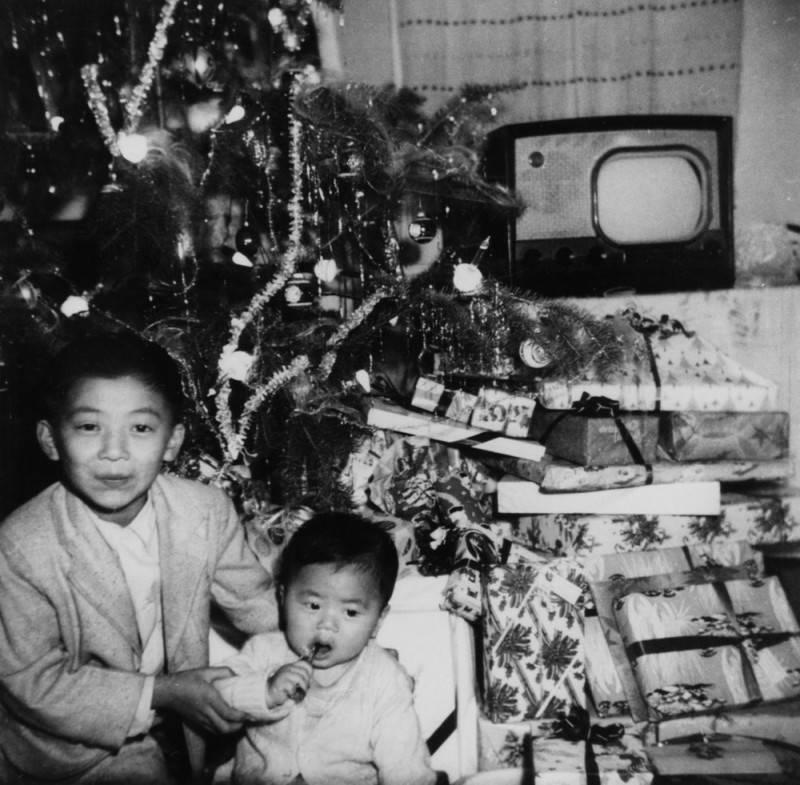
A Japanese American Holiday Season
The show prompts a question that I had never fully considered before: what does an Asian American holiday season look like in real life? Specifically, how do Japanese Americans celebrate the holiday season?
Before answering that question, it’s useful to have an overview of general trends in Japanese American religious life. According to a 2012 study by the Pew Research Center—to date, the most comprehensive study of Asian American religious life—Japanese Americans are a very religiously diverse group. 38% of Japanese American respondents identified as Christian (13% Evangelical, 19% Mainline, 4% Catholic), 25% as Buddhist, 32% as religiously unaffiliated, and the remainder as having unknown or other religions.
Generally speaking, Asian Americans vary a lot by generation. Research suggests that age and nativity shape politics, and the same is true for religion. For example, as the religion scholar Brett Esaki observed in an essay in a new anthology about Japanese American Millennials, younger Japanese Americans—people like Lily—pursue “a religiosity that is increasingly unaffiliated and Protestant Christian.” He found that the percentage of young Japanese Americans who identify as Christian is on the rise. Just as important, those who are religiously unaffiliated have distinct spiritual beliefs and practices and “are certainly not defined by the lack of religion.” As he, Russell Jeung, and Alice Liu wrote in a 2015 article in Religions, Japanese American young adults who identify as religiously unaffiliated nevertheless “maintain hybridized spiritual rituals and value righteous relations.”
In his research, Esaki identified a few key themes in the religious lives of young Japanese Americans. First, they tend to adopt beliefs and practices from different traditions, which relates to their commitment to empathy. As Esaki wrote, “the empathetic nature of young Japanese Americans could be seen to bring them to practice other cultural and religious rituals; the empathy facilitates engagement in belief and practice, and consequentially Christian ritual and belief are part of their religiosity.”
Their ritual lives also reflect the value they place on harmony. Referring to the Toshimaro Ama’s concept of “natural religion,” Esaki noted that the “cultural religion of Japan” involves “ritual obligations, folkloric beliefs, and ideals of community harmony and humility.” Esaki observed that, in the context of the United States,
Japanese American Millennials may be using the unaffiliated religiosity to practice natural religion, including exchanging rituals and beliefs and acting to maintain harmony with others. With the goal of harmony and the ‘ordinary’ in mind, Millennials’ Christian religiosity may not only cultivate harmony across Japanese American religions, but may also help to intertwine them with other American racial groups who are Christian.
These values—hybridity, empathy, and harmony—come together to shape a distinctive approach to the holidays.
So how do Japanese Americans celebrate Christmas? To begin, almost all Japanese Americans celebrate Christmas. According to the 2012 Pew study, 92% of Japanese Americans celebrate Christmas. (To compare, 83% of the general Asian American population observes this holiday.) Participation rates are even higher for young Japanese Americans. According to Jeung, Esaki, and Lui, 100% of young Japanese Americans observe Christmas.
But even though Japanese Americans almost universally celebrate Christmas, the practices vary by generation and religious affiliation. “In contemporary Japan, Christmas (and Valentine’s Day and sometimes weddings) are seen as kitschy western holidays to buy regularized gifts and to wear fun clothes,” said Esaki in an interview. “So Shin-Issei [recently arrived immigrants who tend to have more transnational connections to Japan] do these, but often as extensions of the non-religious Japanese holidays.” In contrast, many Japanese Americans have been in the United States for generations, and their approach to Christmas is somewhat different. “In long-generation families, Christmas is more like a gift-giving time,” Esaki explained. “Most incorporate the whole Santa, cookies and milk, and wrapping in bright colored paper.” Sometimes Japanese Americans incorporate traditional Japanese paper crafts and origami in their gift-wrapping, holiday cards, and tree ornaments. Japanese American Christians might also integrate Japanese elements in their religious observances.
Despite these differences, Japanese American Christmas traditions reveal many of same core themes that shape other aspects of their religious and spiritual lives: hybridity, empathy, and harmony. As Jeung, Esaki, and Liu wrote,
All young Japanese Americans celebrate Christmas, including the unaffiliated. This unanimity illustrates how they may see Christmas as the holiday with the most opportunity to practice hospitality, to have a heartfelt experience with extended family, and to honor parents, elders, and children alike…young Japanese Americans can be unaffiliated yet practice elements of Japanese popular religion.
Japanese Americans also celebrate New Year. “New Year in Japan is probably their biggest holiday,” said Esaki. “There are traditional foods, dances, bells, gifts, Confucian traditions of cleaning and paying off debt. Shin-Issei follow many of these traditions.” But there are important differences between New Year celebrations in Japan as compared to those elsewhere in Asia. In 1872, the Meiji government ended the lunar calendar, which it considered emblematic of the old ways, and adopted the Gregorian calendar in its place. As a result, Japan celebrates the New Year on January 1.
As with Christmas, Japanese American New Year practices vary and are shaped by proximity to ethnic institutions and family. “Those near a Japantown can do the whole gamut,” said Esaki. Community organizations like the Japanese American National Museum, for example, hosts an Oshogatsu Festival, which takes place on the first Sunday after January 1. At this event, participants pound mochi and eat soba (buckwheat noodles), kamaboko (fish cakes), and kuri kinton (sweet potato puree). People might visit a temple, if they live near one. But Japanese Americans located far from Japanese enclaves might find it more difficult to practice traditions that require special ingredients, extended family, and ethnic community. “[P]articipation varies by location near other Japanese Americans, our own level of knowledge and commitment, and whether we associate with recent Japanese immigrants,” explained Eskai. As with many communities, Japanese Americans pursue rituals that reflect their culture and their values, but also the realities of their particular environments.
To be sure, Dash & Lily doesn’t include this level of detail. Nowhere in the show does Lily discuss the challenges of finding gobo for her New Year celebration, the ethics of community harmony, or the intricacies of Japanese popular religion. Then again, most Hallmark Christmas movies don’t engage in much explicit religion-talk, either.
What Dash & Lily does do, though, is widen our imagination about what’s possible to include in the romantic comedies we watch during the holidays. After watching Dash & Lily, I began to brainstorm ideas I might pitch to Lifetime or Hallmark for holiday films that put Asian American characters—and Asian American religious lives—at the center. (If anybody from Lifetime or Hallmark is reading this, I’d love to see a movie about a Filipina American woman who heads home to attend a Misa de Gallo with her Lolo and Lola. At church, she reconnects with an old flame, and later they fall in love while making bibingka for a local baking competition. She and her love interest could exchange their first kiss under a brightly colored parol, and then they could go to the karaoke bar and sing their favorite romantic duets.)
More than anything, Dash & Lily invites us to consider what the holidays mean to diverse Americans today. Asian American religious life, as so many scholars have argued, is charactered by a vibrant hybridity—but that’s true for American religious life in general. May the stories we tell—whether it’s in our scholarship or our holiday romantic comedies—reflect that truth.



